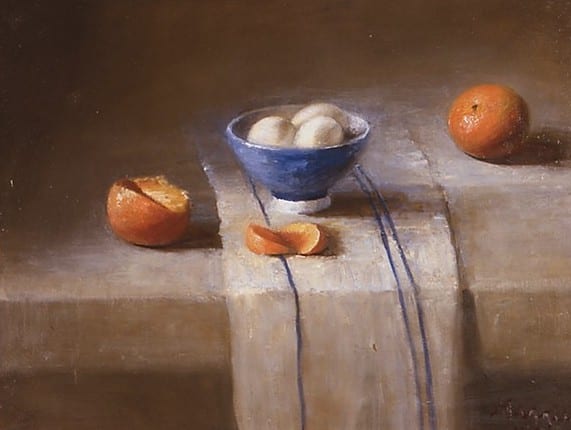
Oil
After a difficult divorce in 2007, I re-dedicated my focus on a book I began back in 2005. “Beyond Paint: A Guide to Conceptual Painting” had rambled around in my brain since 2004. I still have the boxes of words that eventually became the book published in 2013.
I had begun to paint at age 41 with no prior art instruction. My husband at the time thought I was possessed because once I picked up my brush, I never looked back. At the same time, I was a mom to two little guys, ages 3 & 5 and I was working outside our home. (No wonder my hair is turning white.)
As we begin our journey as painters, we are naturally absorbed in details that have little or nothing to do with making art. We might get bogged down in technique rather than rising above mere mechanics. Or, we might be distracted by sales or envious of those who have an easier ride to recognition. (Hint: There are many, many terrific painters. There’s room for everyone.)
When I began to put my ideas about painting down on paper, I was forced to examine my own intentions and beliefs about what it means to paint beyond literal subject matter. Like teaching, writing expands and forces one to make known what one really knows or not. Teaching provides this same type of portal.
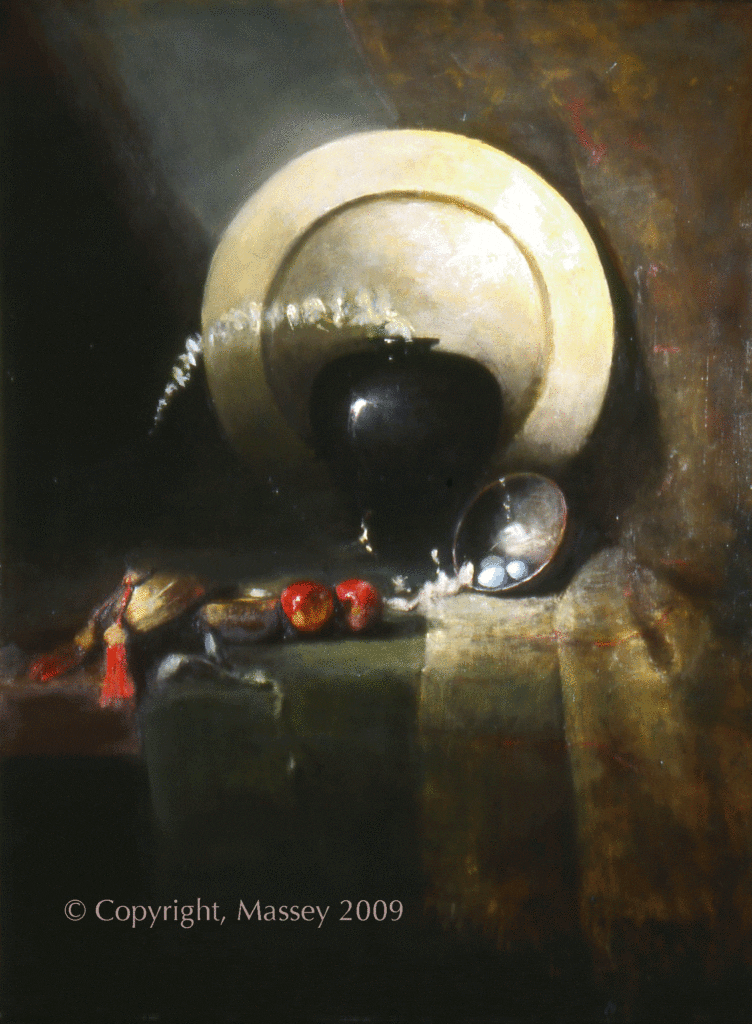
by M Kathryn Massey OPA
Oil
As I explored writing about a non-verbal discipline, painting, I examined those parts of myself that could serve as guides throughout the process.
I’d like to summarize those for you now and would love the opportunity to talk about them through this blog.
As a painter, I am interested in capturing transcendence in art. Meaning, painting beyond subject material whether it be a model, still life or landscape.
For me, I have come to understand that:
Intention and Concept are interdependent.
Intention and concept help to reveal the underlying forms that give integrity to the painting. Intention and concept serve as a road map to realize the painting that I see in my mind’s eye but also includes an organic process that is beyond me and my own will.
Without the artist’s intentionality and the inherent form, the work becomes simply self-expression, which prevents the painter and the final work from developing at its deepest level. Of course, for some painters, self-expression IS painting.
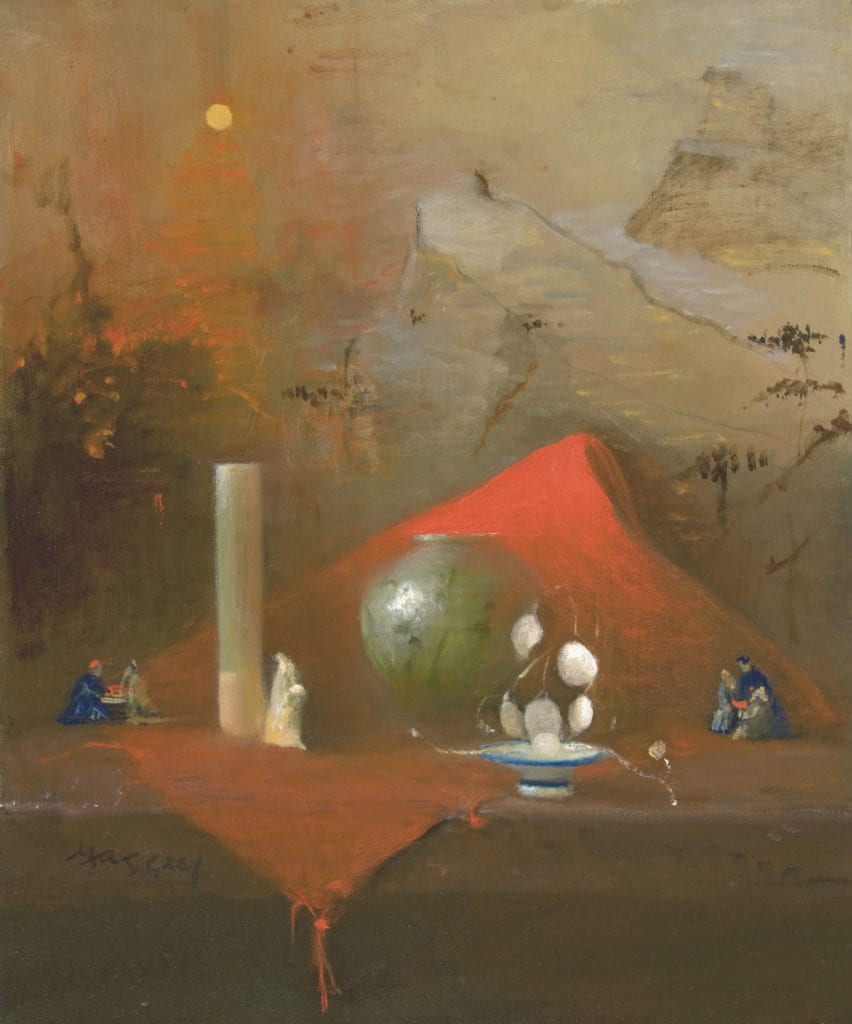
by M Kathryn Massey OPA
Oil
Painting is far more than memorizing static information and rote practice. Art is found, and subsequently thrives, on active questioning and a holistic (Yin and Yang) path of inquiry. (Relationships, balance, whole, integral.) These are my own touchstones when working with mere blobs of paint at the end of a brush.
This means:
I, the painter, merely serve as an Agent, bringing together ordinary objects (my subject) with the principles of art to reveal the hidden radiance of everyday things. This is realized through the balance of relationships within the painting. For me, it is a holistic approach which comes through active listening and attending to the painting throughout the process.
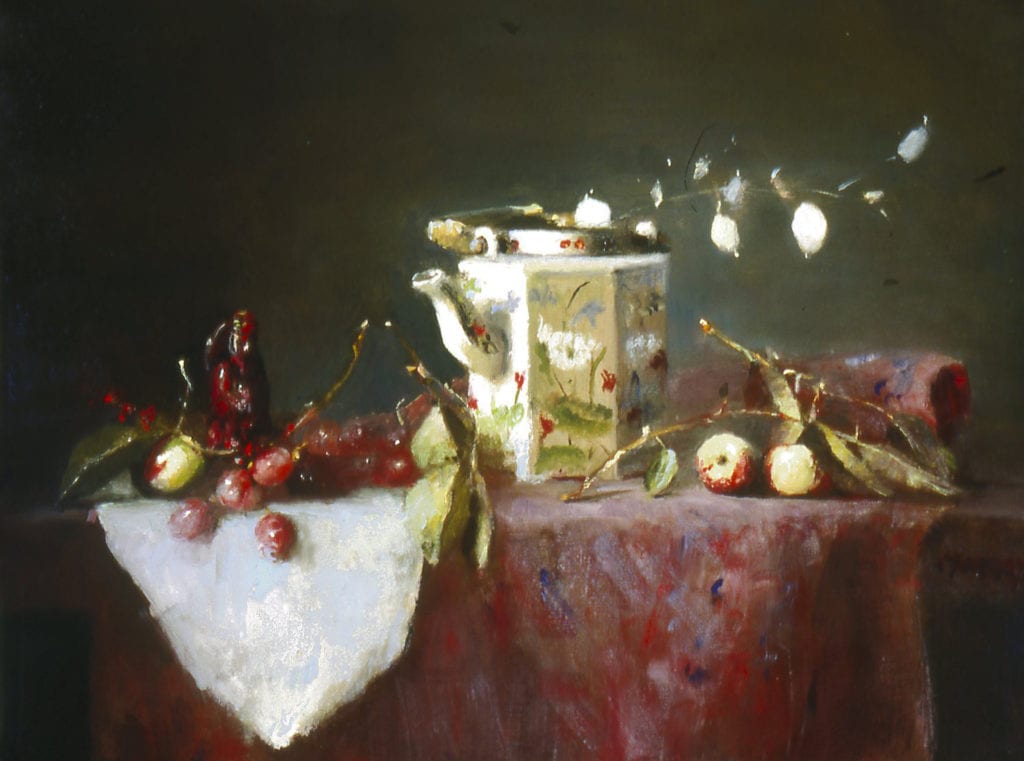
Oil
The sense of transcendence is discovered through the deepest intentions of the painter (also affirmed as the integrity of the painter). My intention, personally, is to create work that is found in the relationships within the painting. As we all know, relationships are often recognized as balanced & whole, or not. One brushstroke either helps or hurts the painting. It’s rarely benign.
The artist’s innermost intentions lead the painter, and subsequently the viewer, to a sense of transcendence that can’t be willed by the painter or the viewer.
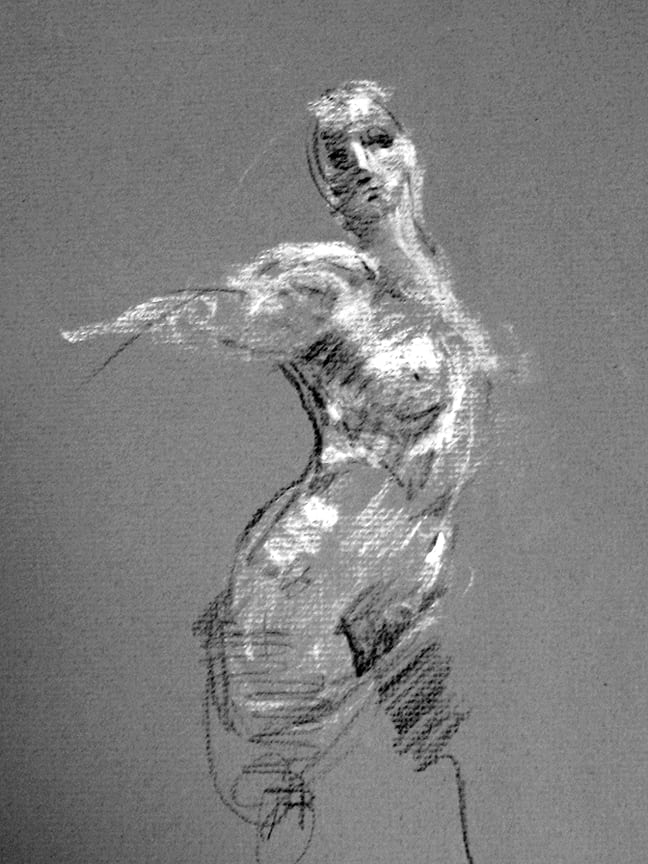
Pastel on Paper
At the same time, my aim as a painter, as Agent, is to offer the viewer a sense of Repose for the Mind so that real knowing can take place.
This place of Repose allows for the viewer to see into the painting, and for the painting to “look back.” The art of the masters contains the past, present, and future simultaneously—a lofty challenge for painters today.
To have something I call the Fourth Dimension in one’s work is perhaps the most difficult in painting. It means a sense of Active Time. The Time is present and we are present to it. It means the work is contained on the Continuum of Time. Past, Present, Future.
My responsibility as a painter is to serve as Agent to connect the viewer with something beyond my own perceptions, beyond objects, and beyond literalism.”
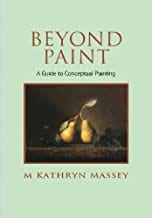
Leave a Reply